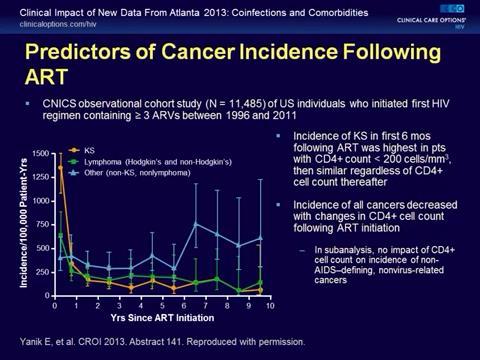We’ve looked before at some of the superb presentation tools within PowerPoint. But sometimes PowerPoint isn’t used to do a presentation justice. That’s definitely the case with this continuing education HIV presentation.

It was given by Alison Duncan, Senior Pharmacist for Infectious Diseases/ HIV at The Alfred Hospital in Melbourne. Alison was presenting to the Society of Hospital Pharmacists of Australia (SHPA) Victorian Branch in May 2013.
You can’t argue with the fact that the third party introduction to Alison Duncan’s HIV presentation is comprehensive. It certainly builds up her status as the speaker at SHPA’s Victoria Branch. As the senior pharmacist for infectious diseases and HIV at the Alfred Hospital she clearly knows her stuff.
Beyond that we note that this HIV presentation is essentially a training or teaching presentation. The give-away perhaps, is the sheer quantity of information that she provides in her presentation. Indeed the slides themselves were probably used as a give-away at the close.
HIV Presentation in PowerPoint
Her presentation is clearly PowerPoint dependent. So, line graphs and block charts are very popular in the presentation. But bizarrely she rarely uses a slide building technique with the information she provides. So when we see this in her presentation we have a huge amount of initial information. She then adds even more information.
I will just bring your attention to the red line and the blue line.

With this PowerPoint slide, Newly diagnosed HIV infection 2002 to 2011 we see eight different line items. It’s quite tricky to spot the right coloured lines. Certainly PowerPoint could have helped here with a slide build technique.
She has buried some information nuggets in this HIV presentation…such as the statistic concerning those people who have HIV but are blissfully unaware of it. Frightening.
Too Much Detail
But as a teaching and educational presentation I struggle with one question. What’s the big point? That’s because there are so many key points that they tend to blend into one another.
But the presentation is refreshing as Alison isn’t afraid to say, “We don’t know”, when faced with unknowns with HIV treatment.

Many of the slides in this HIV presentation depend on bullet points and bullet lists. These carry a weight of information and would benefit from being broken down somewhat.
She has used two separate slide templates in her HIV presentation. One of these clearly originates with a different HIV/ AIDS conference.
It’s a tricky thing grabbing slides from other presentations. But you might just as well do so. You can save time. However, PowerPoint does allow you to apply one slide template to your whole presentation.

This remains a good education/ training presentation on an important subject. But Alison could have used PowerPoint more effectively to boost her obvious talent for the job. Perhaps one might use a SmartDraw PowerPoint alternative?
To find out more uses for PowerPoint in your next presentation why not join us on a presentation skills training course.
OUR CONTACT DETAILS
Phone Number
01344 859823
Email Address
training@timetomarket.co.uk
Training | Coaching | Online Courses | Seminars | Tips | Podcasts | Videos

